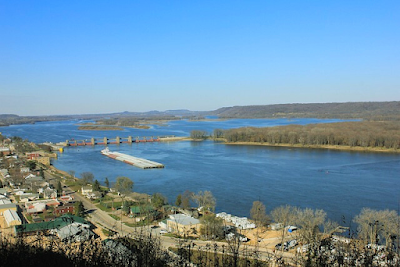Title: Exploring the Mighty Waters: The Majesty of America's Largest River
America's rivers carve through landscapes, shaping the nation's geography and culture. Among these aquatic giants, one reigns supreme: the Mississippi River. Stretching over 2,300 miles, the Mississippi River is not just a waterway; it's a lifeline, a symbol of resilience, and a testament to the power of nature.
**A Tapestry of Landscapes:**
The Mississippi River begins its journey at Lake Itasca in Minnesota, meandering southward through the heartland of America, and finally emptying into the Gulf of Mexico. Along its course, it paints a breathtaking picture of diverse landscapes – from the tranquil forests of the North to the bustling cities of the Midwest, and the fertile plains of the South.
**Economic Engine:**
Beyond its scenic beauty, the Mississippi is an economic powerhouse. Its waters facilitate commerce, transporting goods and commodities from the heartland to the world. Major cities such as Minneapolis, St. Louis, Memphis, and New Orleans owe their prosperity to the river's trade routes. Its fertile floodplains also support agriculture, contributing significantly to the nation's food production.
**Cultural Icon:**
The Mississippi River has woven itself into the fabric of American culture. Mark Twain immortalized its spirit through the adventures of Huckleberry Finn and Tom Sawyer. Blues and jazz musicians drew inspiration from its banks, giving birth to iconic American music genres. Moreover, Native American tribes have revered the river for centuries, attributing spiritual significance to its waters.
**Environmental Importance:**
Beyond its economic and cultural significance, the Mississippi River plays a vital role in the ecosystem. Its basin supports a diverse array of flora and fauna, including numerous species of fish, birds, and mammals. However, human activities such as pollution, habitat destruction, and levee construction have threatened its delicate balance, highlighting the importance of conservation efforts.
**Challenges and Opportunities:**
Despite its grandeur, the Mississippi River faces numerous challenges in the 21st century. Climate change, pollution, and aging infrastructure pose significant threats to its health and sustainability. However, these challenges also present opportunities for innovation and collaboration. Through sustainable practices, technological advancements, and community engagement, we can ensure the Mississippi River continues to thrive for generations to come.
**Conclusion:**
The Mississippi River stands as a testament to the power and beauty of nature. As the largest river in America, it embodies the spirit of exploration, resilience, and interconnectedness. From its headwaters to its delta, the Mississippi weaves together the diverse tapestry of American landscapes, cultures, and economies. As stewards of this majestic waterway, it is our responsibility to preserve and protect it for future generations to cherish and enjoy.




Comments